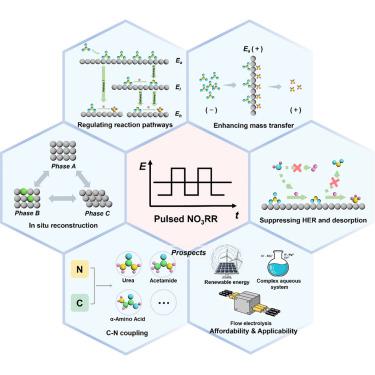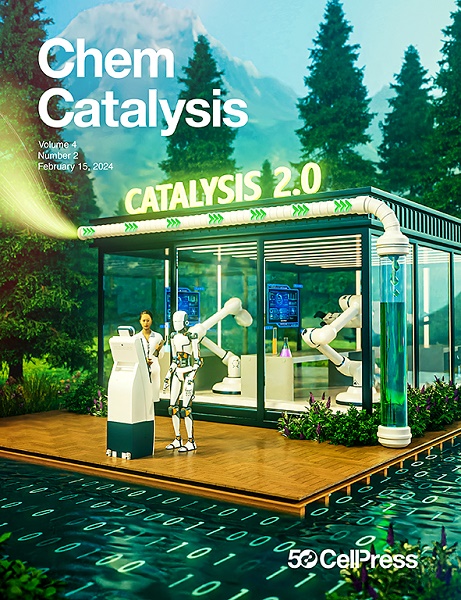动态脉冲电催化高效定向还原硝酸盐为氨
IF 11.6
Q1 CHEMISTRY, PHYSICAL
引用次数: 0
摘要
电化学硝酸还原反应(NO3RR)为同时解决环境硝酸盐(NO3−)污染和脱碳氨(NH3)生产提供了一条可持续的途径。传统的恒电位电催化NO3RR得到了广泛的研究,但存在固有的局限性,包括竞析氢、中间脱附、传质瓶颈等。因此,脉冲电催化作为一种易于操作的方法,可以通过周期性地改变外加电位来调节反应途径,有效地克服了恒电位催化的局限性。然而,关于脉冲催化NO3RR的研究仍然是碎片化的,缺乏系统的分类。因此,这篇综述提供了脉冲NO3RR系统的全面概述,包括基本的测试方法,催化机制,设备配置,原位表征技术和脉冲策略的优点。此外,分析概述了催化剂设计的基本标准,以最大限度地发挥脉冲策略的潜力,并强调需要加强对现有脉冲NO3RR实现的研究和改进。本文章由计算机程序翻译,如有差异,请以英文原文为准。

Dynamic pulse electrocatalysis for efficient and directed reduction of nitrate to ammonia
The electrochemical nitrate reduction reaction (NO3RR) presents a sustainable pathway to simultaneously address environmental nitrate (NO3−) pollution and decarbonize ammonia (NH3) production. While traditional constant-potential electrocatalysis for NO3RR has been widely studied, it suffers from inherent limitations, including competing hydrogen evolution, intermediate desorption, mass transfer bottlenecks, etc. In response, pulsed electrocatalysis, as an easily operable method, enables the regulation of reaction pathways by periodically varying applied potentials and can effectively overcome the limitations of constant-potential catalysis. However, research on pulsed catalysis in NO3RR remains fragmented, lacking systematic categorization. Consequently, this review provides a comprehensive overview of pulsed NO3RR systems, encompassing fundamental testing methodologies, catalytic mechanisms, device configurations, in situ characterization techniques, and merits of pulsed strategy. Furthermore, the analysis outlines essential criteria for catalyst design to maximize the potential of pulsed strategy and emphasizes the need for enhanced research and refined investigations in existing pulsed NO3RR implementations.
求助全文
通过发布文献求助,成功后即可免费获取论文全文。
去求助
来源期刊
CiteScore
10.50
自引率
6.40%
发文量
0
期刊介绍:
Chem Catalysis is a monthly journal that publishes innovative research on fundamental and applied catalysis, providing a platform for researchers across chemistry, chemical engineering, and related fields. It serves as a premier resource for scientists and engineers in academia and industry, covering heterogeneous, homogeneous, and biocatalysis. Emphasizing transformative methods and technologies, the journal aims to advance understanding, introduce novel catalysts, and connect fundamental insights to real-world applications for societal benefit.

 求助内容:
求助内容: 应助结果提醒方式:
应助结果提醒方式:


